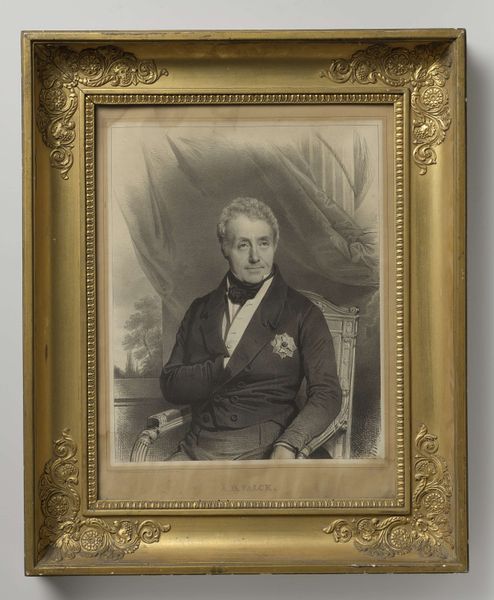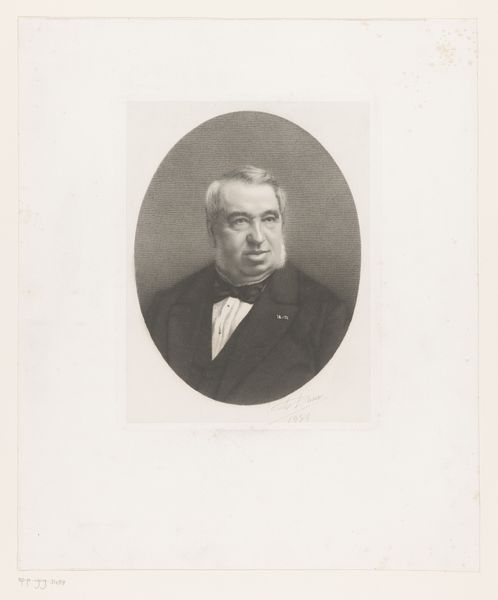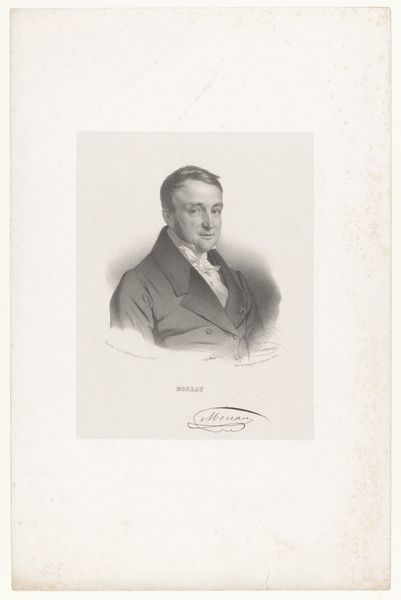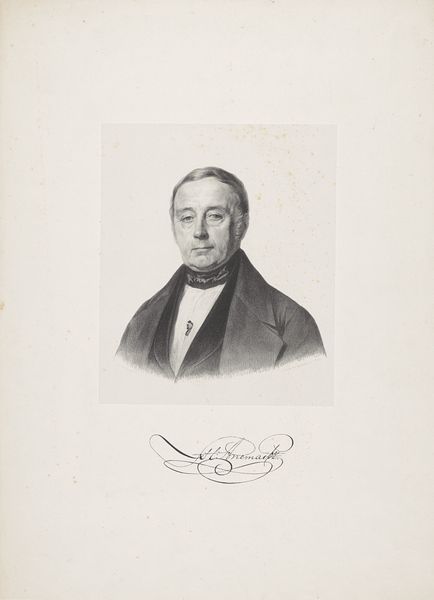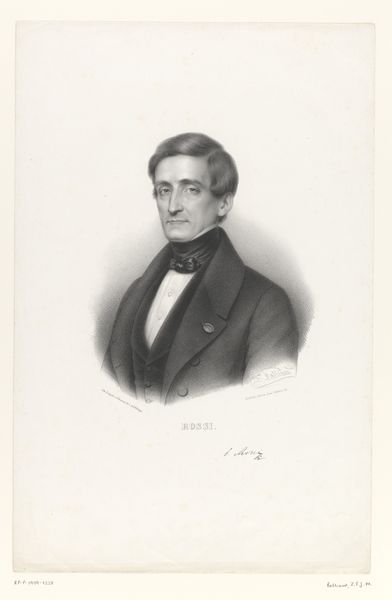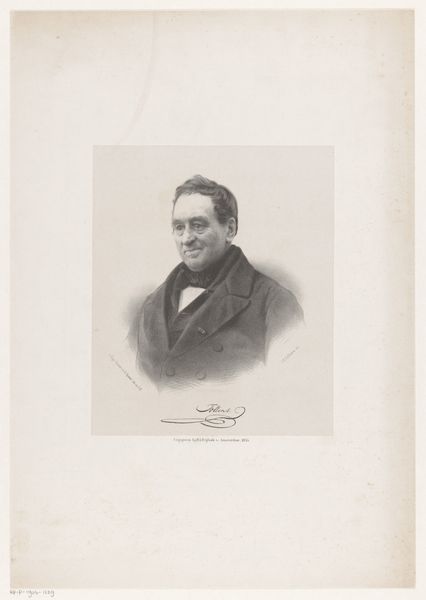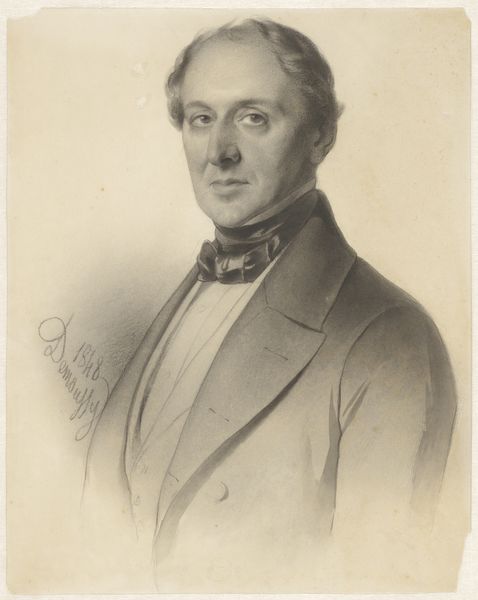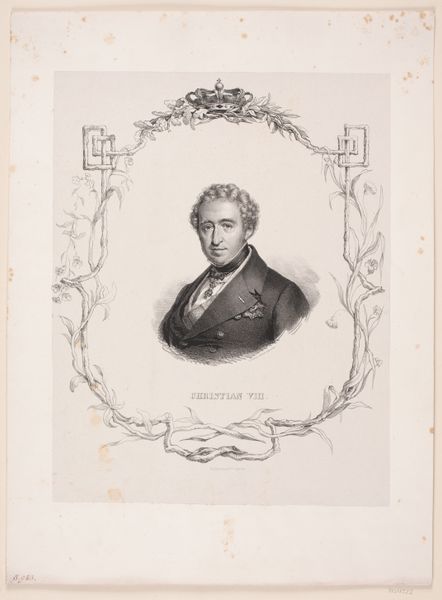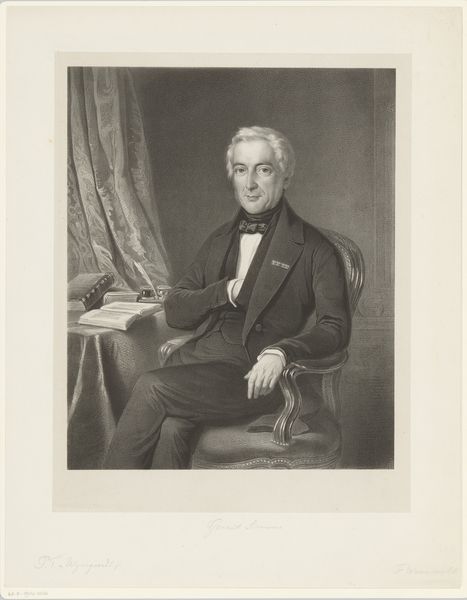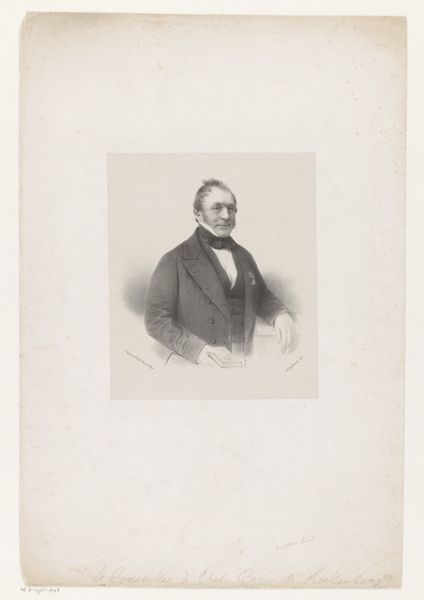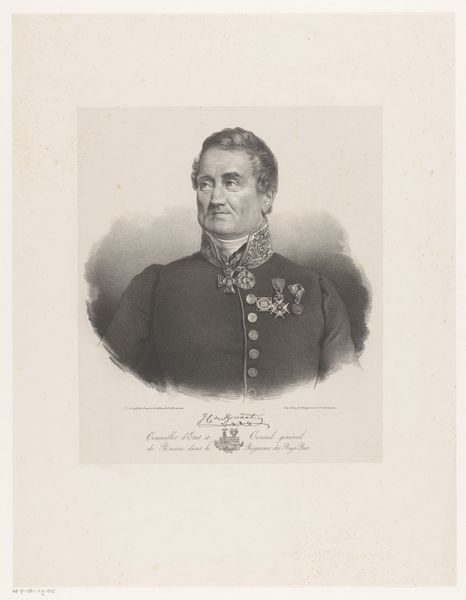
drawing
#
portrait
#
drawing
#
figuration
#
romanticism
#
portrait drawing
#
academic-art
Dimensions: height 448 mm, width 350 mm
Copyright: Rijks Museum: Open Domain
Curator: Immediately, I find myself focusing on the texture – or perhaps, the suggestion of texture, within this portrait. The way light catches on fabric and hair through these incredibly fine lines is compelling. Editor: We are viewing Charles Baugniet’s "Portret van Anton Reinhard Falck," created in 1842. Falck, a prominent Dutch statesman, is depicted in this drawing currently held at the Rijksmuseum. It is a classic romantic era figuration. I find the subject rather reserved in affect. Curator: The posture contributes to that air of composure, doesn't it? Note how he crosses his arms, suggesting an interiority, a self-possessed nature. But I see it further emphasized by the cool gradations of light and shadow on the face and attire; the artist’s rendering enhances Falck’s serious and pensive air. Editor: Indeed. He was a man of considerable influence. Falck helped shape Dutch policies after the Napoleonic era, so the gravitas fits. What's most telling to me is the backdrop – the curtain and the suggestion of an outdoor landscape denote status, all intended to broadcast Falck’s power and sophistication. He's positioned deliberately within a sphere of influence. Curator: Yes, but observe how the relatively muted tones throughout the piece minimize ostentation; while Falck certainly appears distinguished, Baugniet avoids garish ornamentation that would pull us out of the portrait’s more immediate compositional attributes, don't you agree? The gaze directs your eye straight away! Editor: Well, consider that academic art of this period served specific functions: commemoration, propagation of societal values and national image. While artistic considerations remain paramount, so too does the careful portrayal of a national figure according to convention. Curator: True. It’s a dance, isn't it, between representation and intrinsic visual qualities? Even in portraiture which may seek to embody social ideals, the choices in line and form create a singular emotional and perceptual impact. Editor: Agreed. It brings us to think of not only Falck the man but how that image shaped or reinforced a historical perception of him in a particular political landscape. Thank you for elucidating those qualities in Baugniet's craftsmanship so vividly! Curator: My pleasure! The exercise reminds me that portraits never really capture individuals; but rather immortalize a fleeting relationship between the art and the way we, today, may still recognize its significance.
Comments
No comments
Be the first to comment and join the conversation on the ultimate creative platform.
